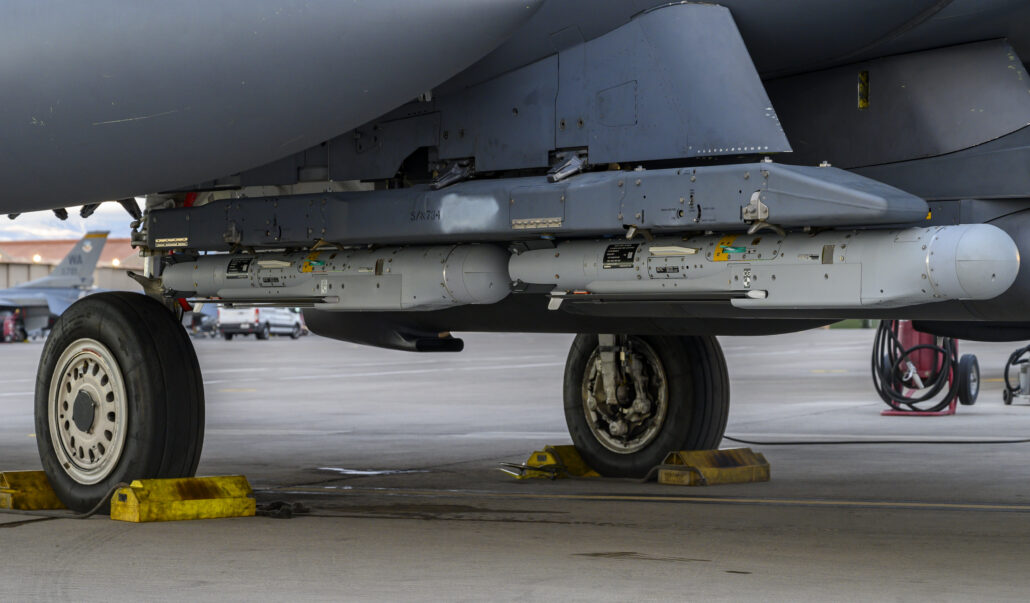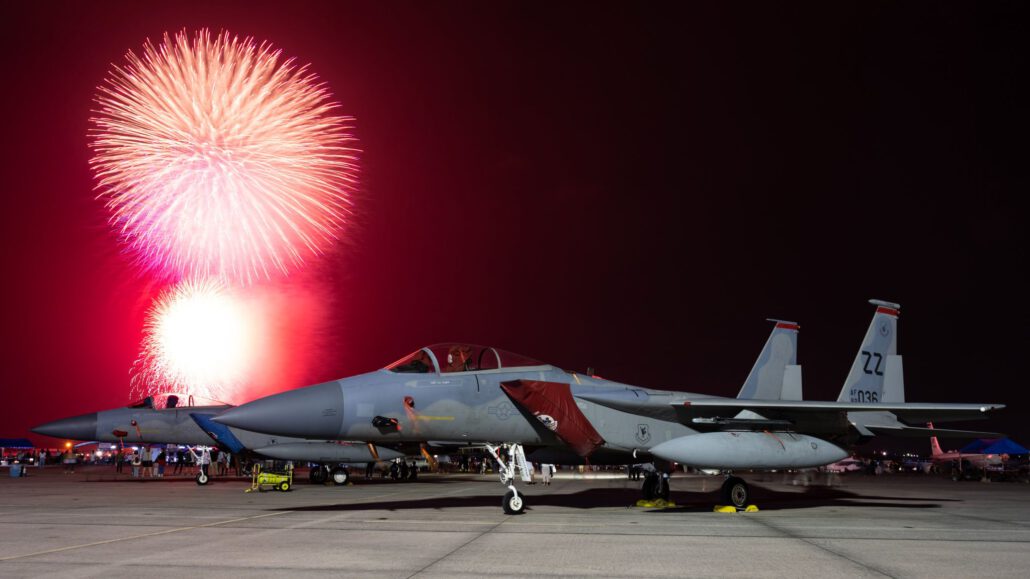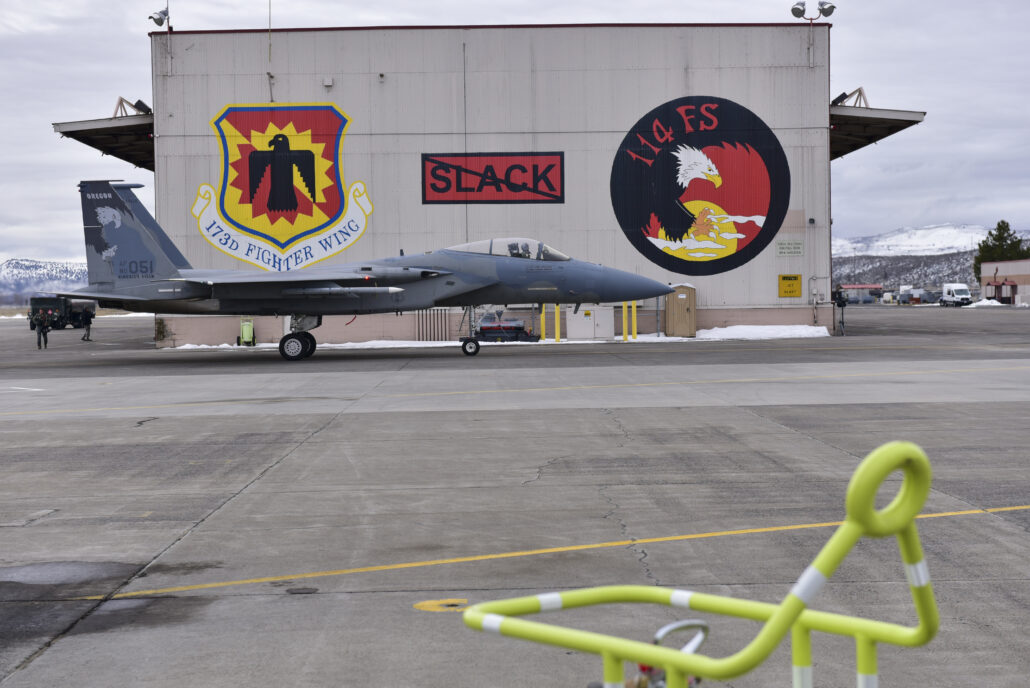By 1st Lt Daniel Barnhorst
The 391st Fighter Squadron became the first operational unit to use the GBU-53/B, the Air Force’s new small diameter bomb known as StormBreaker, Nov. 2 at the Utah Test and Training Range.

Four F-15Es from the 366th Fighter Wing had the opportunity to employ this new capability as part of WSEP (Weapon System Evaluation Program).
The evaluation involved multiple aircraft targeting and engaging four ground-based vehicles with four of StormBreakers. Despite all of the vehicles being moving targets and this being a relatively new munition, all four were successfully hit.
The StormBreaker measures at 69 inches long, 6-7 inches in diameter, weighs 204 pounds and carries a 105 pound warhead. By using a combination of millimeter wave active radar homing, semi-active laser guidance, infrared homing, GPS coupled inertial guidance and data-link, the bomb is proven to strike stationary targets at 69 miles and moving targets at 45 miles.
According to Capt. Kyle “Scrap” Holifield, 391st Fighter Squadron, Chief of Weapons and Tactics, the integrated connectivity of the new bomb is one of its greatest assets, allowing it to be launched and then, if needed, redirected by the aircrew toward a new target while in transit. “I love that it can get on link,” he said referring to the communication system that is used by the F-15E’s, and numerous other platform’s, electronic systems and is the backbone of this capability.
“The new small diameter bomb provides F-15E’s with new and complimentary capabilities,” said Holifield. “It is not a replacement for other bombs.”
Because of the small size of these new munitions, the F-15E Strike Eagle can carry up to 28 GBU-53/Bs. The ability to carry more munitions is critical in situations where there exists a high number of ground targets that require a high level of accuracy as offered by the StormBreaker.
However, there was additional coordination and planning required to employ the new bomb. Due to increased capabilities of this munition, the bomb and the aircraft are able to communicate with each other, which requires intelligence airmen to load encrypted communication information into the bomb’s computer.
The person responsible for overseeing the process was 1st Lt. Estefania Ortiz-Santiago, 391st Fighter Squadron Officer in Charge of Intelligence. She said “the process was more extensive” compared to the bombs that the F-15E traditionally uses and that there was a fair amount of trouble shooting to ensure assets were communicating properly.
Ortiz-Santiago noted that in the future, she expects the process will become more streamlined and take about the same amount of time to prepare as other bombs currently in use by the F-15E.
The GBU-53/B is a great addition to the F-15E platform and improves its lethality even further. “I think it’s going to be great. It will be an awesome weapon,” Holifield said.
“These tests are critical to paving the way for StormBreaker’s employment by the Combat Air Forces,” said Alison Howlett, program director for StormBreaker at Raytheon Missiles & Defense. “By stress-testing the weapon in an operational environment, we are even more confident in the weapon’s ability to strike targets in difficult conditions.”
While the GBU-53/B is currently only approved for integration on the Strike Eagle, results will also support the employment of StormBreaker by joint capabilities with the U.S. Navy’s F/A-18E/F Super Hornet and eventually fifth generation platforms such as the F-35.
“StormBreaker employment is a team effort. It requires the expertise of our aircrew, intelligence, munitions and maintenance Airmen to ensure we’re implementing the most effective processes efficiently,” said Col Ernesto DiVittorio, the 366th Fighter Wing Commander. “Gunfighters have always been on the leading edge of innovation. I knew the F-15E and the 366th Fighter Wing were the right front line team to first evaluate the integration of the GBU-53/B. This new capability will start by increasing our lethality in today’s fights, but has applicability if the United States must fight on future battlefields.”


